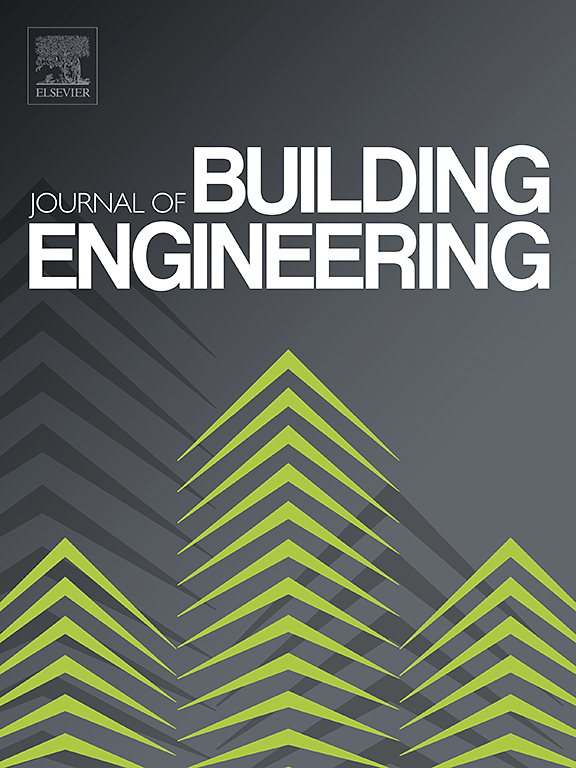Understanding human-obstacle interaction dynamics on staircases: Implications for emergency evacuation and fire safety in high-rise buildings
IF 6.7
2区 工程技术
Q1 CONSTRUCTION & BUILDING TECHNOLOGY
引用次数: 0
Abstract
Interactions between system components, including human-obstacle, human-building, human-robot, and human-human, significantly impact public safety, system efficiency, and functionality. A deeper understanding of these systems is essential to enhance their resilience and effectiveness. Despite the significance of these interactions, empirical research is limited, particularly regarding behavioral mechanisms when interacting with obstacles on stairways. Our study examines the evacuation behavior of 90 evacuees on the staircase of a high-rise building under different temporary obstacle conditions to understand how key factors affect decision-making and motion behavior during stairway descent. The experiments considered obstacle shapes as control variables and analyzed evacuation time, inner and outer stair route choices, regional speed fluctuations, velocity-relative displacement, evacuation efficiency, and biomechanical analysis of occupants’ comfort. Results show that larger obstacle shapes, increased evacuation urgency time, and closer proximity to the wall lead to a higher proportion of the splitting to merging state before and after obstacle interaction. A strong inner stair route preference emerges in no-obstacle conditions, with significant mean speed differences in downward movements when encountering temporary obstacle. Three phases of average speed variations are observed: deceleration, acceleration, and continued deceleration for the outer route; and deceleration followed by uniform speed for the inner route. A method was developed to calculate regional speed fluctuation using average speeds from trajectories. Comfort analysis revealed that temporary obstacle on building stairways significantly impact safe evacuation. Overall, these findings enhance the understanding of crowd dynamics in high-rise building emergency evacuations, with implications for model development, architectural design, building operations, emergency preparedness, behavioral cognition, and fire safety.
了解楼梯上人与障碍物的互动动态:对高层建筑紧急疏散和消防安全的影响
系统各组成部分之间的相互作用,包括人与障碍物、人与建筑物、人与机器人以及人与人之间的相互作用,都会对公共安全、系统效率和功能产生重大影响。深入了解这些系统对于增强其复原力和有效性至关重要。尽管这些互动非常重要,但实证研究却很有限,特别是关于与楼梯上的障碍物互动时的行为机制。我们的研究考察了 90 名疏散人员在不同临时障碍物条件下在高层建筑楼梯上的疏散行为,以了解关键因素如何影响楼梯下降过程中的决策和运动行为。实验将障碍物形状作为控制变量,分析了疏散时间、内外楼梯路线选择、区域速度波动、速度-相对位移、疏散效率以及对居住者舒适度的生物力学分析。结果表明,障碍物形状较大、疏散紧迫时间增加、距离墙壁较近,导致在障碍物相互作用前后,从分裂状态到合并状态的比例较高。在没有障碍物的情况下,会出现强烈的内楼梯路线偏好,在遇到临时障碍物时,向下运动的平均速度差异显著。观察到平均速度变化的三个阶段:外侧路线为减速、加速和继续减速;内侧路线为减速后匀速。利用轨迹的平均速度,开发了一种计算区域速度波动的方法。舒适度分析表明,建筑物楼梯上的临时障碍物对安全疏散有很大影响。总之,这些研究结果加深了人们对高层建筑紧急疏散中人群动态的理解,对模型开发、建筑设计、建筑运营、应急准备、行为认知和消防安全都有意义。
本文章由计算机程序翻译,如有差异,请以英文原文为准。
求助全文
约1分钟内获得全文
求助全文
来源期刊

Journal of building engineering
Engineering-Civil and Structural Engineering
CiteScore
10.00
自引率
12.50%
发文量
1901
审稿时长
35 days
期刊介绍:
The Journal of Building Engineering is an interdisciplinary journal that covers all aspects of science and technology concerned with the whole life cycle of the built environment; from the design phase through to construction, operation, performance, maintenance and its deterioration.
 求助内容:
求助内容: 应助结果提醒方式:
应助结果提醒方式:


